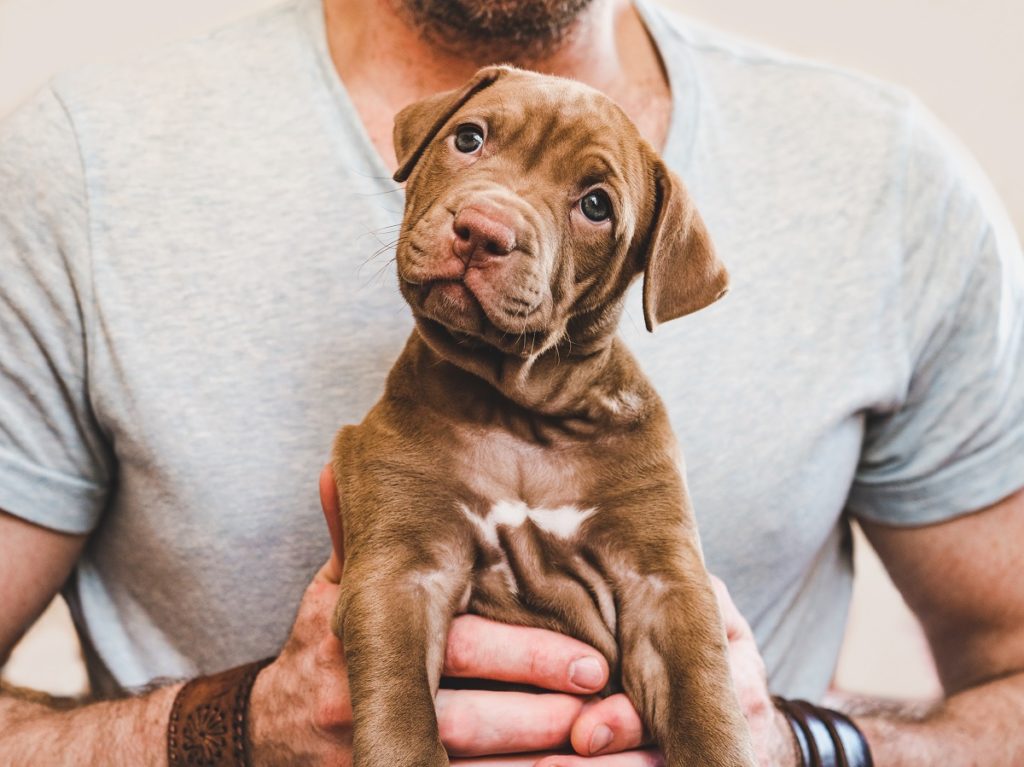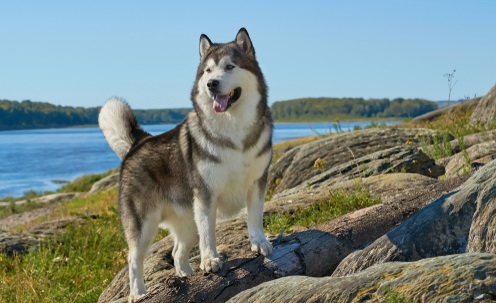One of the best things about life with a puppy is following their growth. One moment, your puppy is the size of a shoe. The next, he’s too big for you to carry.
But knowing your dog’s growth rate will allow you to plan ahead. The last thing you want is to buy an expensive collar only to watch your puppy outgrow it within a month. So, at what age is a dog fully grown?
A dog’s growth rate depends largely on the breed. Whereas small breeds such as Pomeranians reach maturity usually within a year, larger breeds such as Great Danes take a bit longer.
In this blog post, we’ll cover all you need to know about the age at which dogs are fully grown.
We’ll break down growth rates by breed size and give you tips and tricks for caring for your pup throughout the process of maturation.
Stages of Puppy Growth
Although different breeds grow at different rates, all puppies go through five stages of development. Knowing these stages will help you better understand your dog’s overall growth trajectory. The five stages are as follows:1
- Neonatal (newborn-2 weeks): While puppies in this stage sleep most of the day, weight changes are dramatic. The birth weight typically doubles in a week.
- Transitional (2-4 weeks): This is the stage where puppies open their eyes and learn to walk. Baby teeth arrive during this time.
- Juvenile (4-12 weeks): The juvenile stage is a time of exploration. Puppies will begin to play and run more, and their muscles will strengthen. You’ll see changes in your puppy’s size nearly every day. Unfortunately, this is also the stage where a puppy might start to get fearful and aggressive around others. Don’t worry—this is a normal sign of growth!
- Adolescence (6-12 months): At the end of this stage, physical growth will slow down and babyfur will be gradually replaced by an adult coat. This is also the stage where female puppies go into heat.
- Full Maturity (1-2 years): All dogs reach their full size during this period. They’re now considered adult dogs.
Puppy Milestones
While the general stages of development give you an overall idea of what to expect, let’s take a look at more exciting indicators of growth (at least from a pet parents’ perspective)—puppy milestones.
- Opening Eyes: A puppy will first open its eyes during its second week. Sometimes one eye will open before the other, and some puppies may even open their eyes earlier.
- Walking: By the end of their third week, most puppies have learned to stand upright and walk. Don’t worry if your puppy’s a bit wobbly at first. Before you know it, they’ll be running laps around your yard.
- Barking: Although some puppies bark more than others, all puppies generally start barking at eight weeks old. At first, their barks may be little more than squeaks but will eventually deepen. Eventually, you will both be ready to learn how to train a dog not to bark!
- Stopping Biting: With proper training, puppies generally stop biting at five months old. If they’re not properly trained, however, biting can turn into a big problem down the line.
While you’ll keep making sweet memories with your pup for years to come, he’ll eventually pass through these milestones and enter canine adulthood.
Signs Your Dog Has Reached Full Maturity
It’s important to remember that while all dogs go through these stages of development, how fast these stages arrive depends on a dog’s breed. Nevertheless, there are a few common signs that tell you your dog has reached full maturity. These include:
- Emotional Maturity: Whereas puppies are incredibly playful and distracted, emotionally mature dogs tend to be calmer and more obedient. You’ll know your pup has reached a level of emotional maturity when they begin to act like a full-grown dog.
- Physical Maturity: As stated above, all dogs reach physical maturity within 1-2 years. You’ll know your dog has physically matured based on his size, weight, and caloric needs. Physically mature dogs are larger than puppies and adolescents and thus need more calories.
- Sexual Maturity: A puppy’s sex organs are usually developed around six months of age, making it sexually mature. This is the best time to have your pup spayed or neutered.
Now that you know the stages of development and signs to look for, let’s discuss growth rates by breed size.
Growth Rates By Breed Size
Although there are numerous dog breeds out there, veterinarians place breeds into five categories based on size: toy, small, medium, large, and giant. Each size has a different rate of growth (although some sizes do occasionally overlap based on breed).
The growth rates by size are as follows:2
- Toy Breeds: Weighing up to 12 pounds fully grown, toy dog breeds are the smallest, cutest dogs out there. Breeds in this group include the chihuahua, Maltese, Peking, Pomeranian, and Shih Tzu. On average, toy breeds gain 1-5 ounces per week and usually reach full maturity within eight months.
- Small Breeds: Small dog breeds grow faster than larger dogs but slower than toy breeds. Small breeds include the French bulldog, pug, and Shetland sheepdog. Fully-grown, small breeds weigh between 12-25 pounds. It takes between 8-12 months for small breeds to reach full maturity.
- Medium Breeds: Consisting of breeds weighing between 25-50 pounds, medium breeds reach full maturity within 9-10 months. Medium breed dogs include the border collie, cocker spaniel, corgi, and English springer spaniel.
- Large Breeds: Large breed dogs weigh between 50-100 pounds and typically take 12-18 months to reach full maturity. These breeds include the Alaskan malamute, bloodhound, German shepherd, and Labrador retriever. If you’re in the market for good guard dogs or are interested in learning more about aggressive dog breeds, a large breed is the perfect option.
- Giant Breeds: The largest of all dog breed groups, giant breeds include the Bernese mountain dog, bullmastiff, great Dane, and Irish wolfhound. Like large breeds, giant breeds typically take 12-18 months to reach full size, although some breeds continue to grow for up to three years! Fully-grown, giant breeds weigh over 100 pounds.
While these categories appear to be neat, certain breeds can overlap into other categories.
Likewise, it can be especially difficult to predict the growth rate for mixed breeds. If you know your dog is mixed, but don’t know the specific breeds, it may be a good idea to get a DNA test for your pup.
Caring for Your Growing Dog
Now that you know the answer to the question “at what age is a puppy fully grown,” it’s time to start thinking about how to care for a growing dog.
Providing proper support for your dog at every stage of development ensures him a long, happy, and healthy life. Below, you’ll find out what you need to do to meet your dog’s needs at every stage:
- Switch to Adult Dog Food: As dogs reach physical maturity, their caloric needs greatly increase. Additionally, adult dogs typically need different nutrients than puppies and adolescents. Buying specific dog food for each developmental stage ensures your dog’s nutrition needs are met.
- Take Your Dog In For Check-ups: During the first year of his life, a puppy will need to see the vet frequently. These visits are necessary for vaccine shots and routine developmental check-ups. However, vet visits shouldn’t cease once your dog reaches full maturity. Keep your fully-grown dog healthy by taking it for visits at least once a year.
- Keep Exercising: Anyone who’s owned a puppy knows how wild and full of energy they can be. As a result, puppies generally meet their exercise needs by playing around the house. Adult dogs, however, tend to be calmer and therefore may not be getting as much exercise as they need. Be sure to build in structured exercise time with your fully-grown dog.
- Replace Dog Supplies: As dogs reach full maturity, they typically outgrow their collars, kennels, and food bowls. Be sure to keep up with your pup’s growth by replacing their supplies as needed.
- Supplement with CBD and Hemp-Based Products: As dogs age, physical and behavioral changes occur. Is your dog stressed by loud sounds, new faces, or certain objects? Is he exhibiting signs of discomfort after normal activity? If so, you may want to supplement his diet with CBD and hemp-based products. CBD, for instance, can help with anxiety and pain. Check out Canna-Pet for our full range of 100% organic products, including CBD treats made especially for dogs.
The Growing Never Stops. Enjoy it to its Fullest With Canna-Pet.
Just because your dog’s reached full maturity doesn’t mean it stops growing. For instance, the bond he shares with you throughout life keeps developing. This is why adopting a puppy is so exciting—not only do you get to see it physically develop, but you also watch a relationship blossom over time.
But as your relationship develops, so do your dog’s needs. Be sure to meet them at every stage of the development process by following the above guide. And be sure to check out Canna-Pet for the latest CBD and hemp-based products designed to help your dog stay relaxed and carefree. With Canna-Pet, you can help your dog keep their “inner-puppy” no matter their age.
Sources:
- PupBox. When Do Dogs Stop Growing? A Puppy Growth Guide. https://www.pupbox.com/training/when-do-dogs-stop-growing/
- Dog Care Knowledge. Puppy Weight Chart For Each Breed Size.https://www.dog-care-knowledge.com/puppy-weight-chart.html






